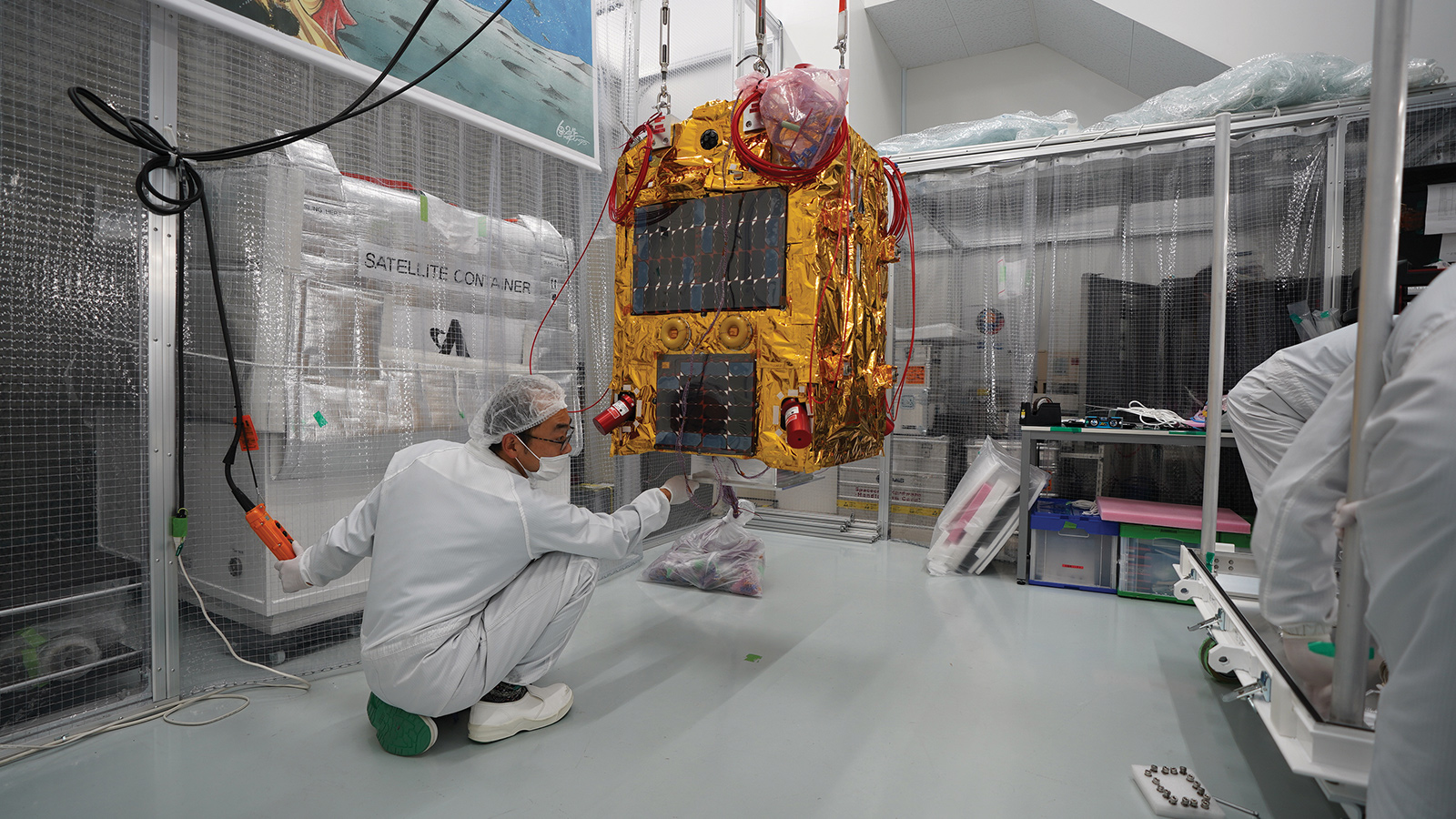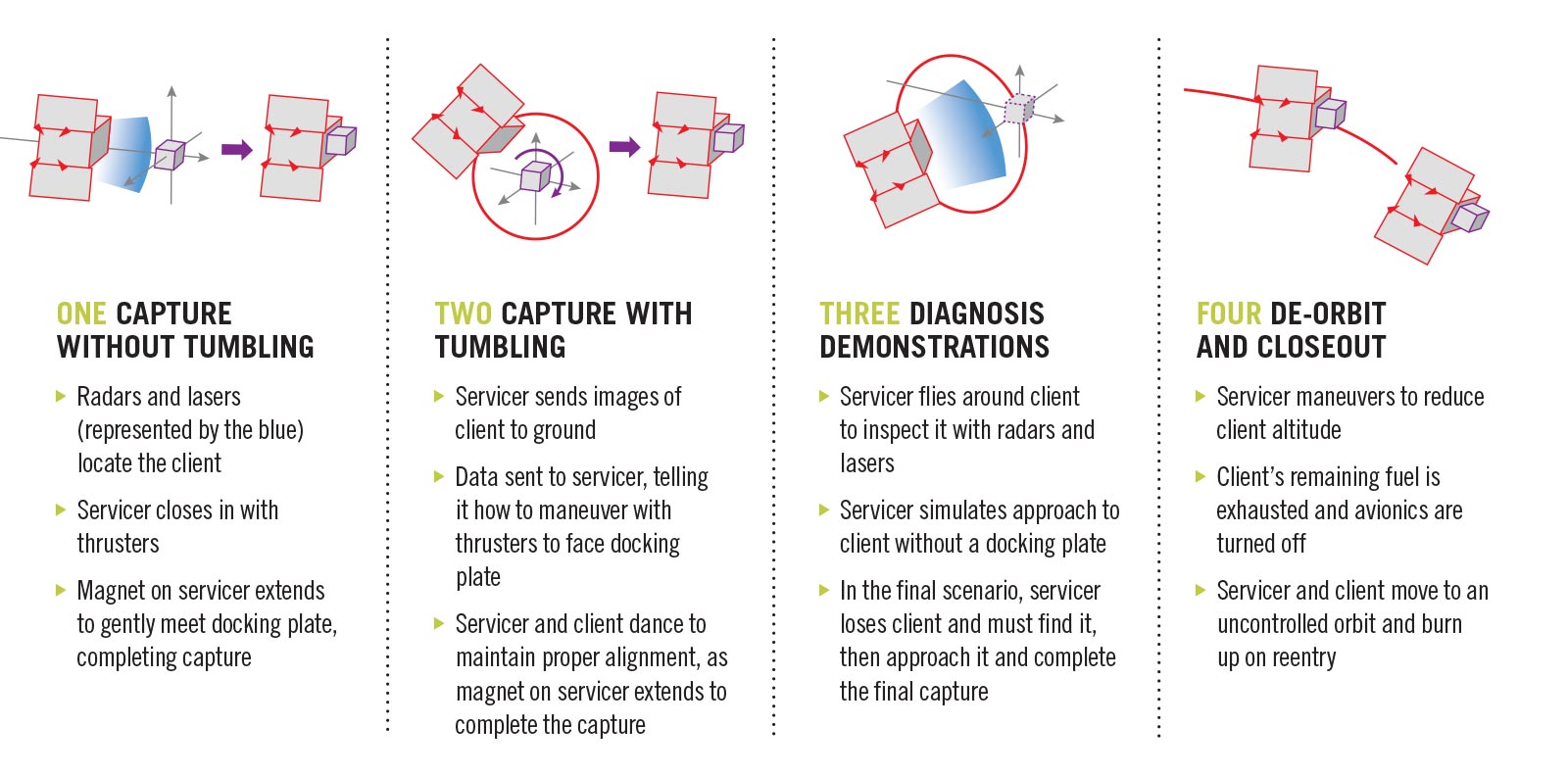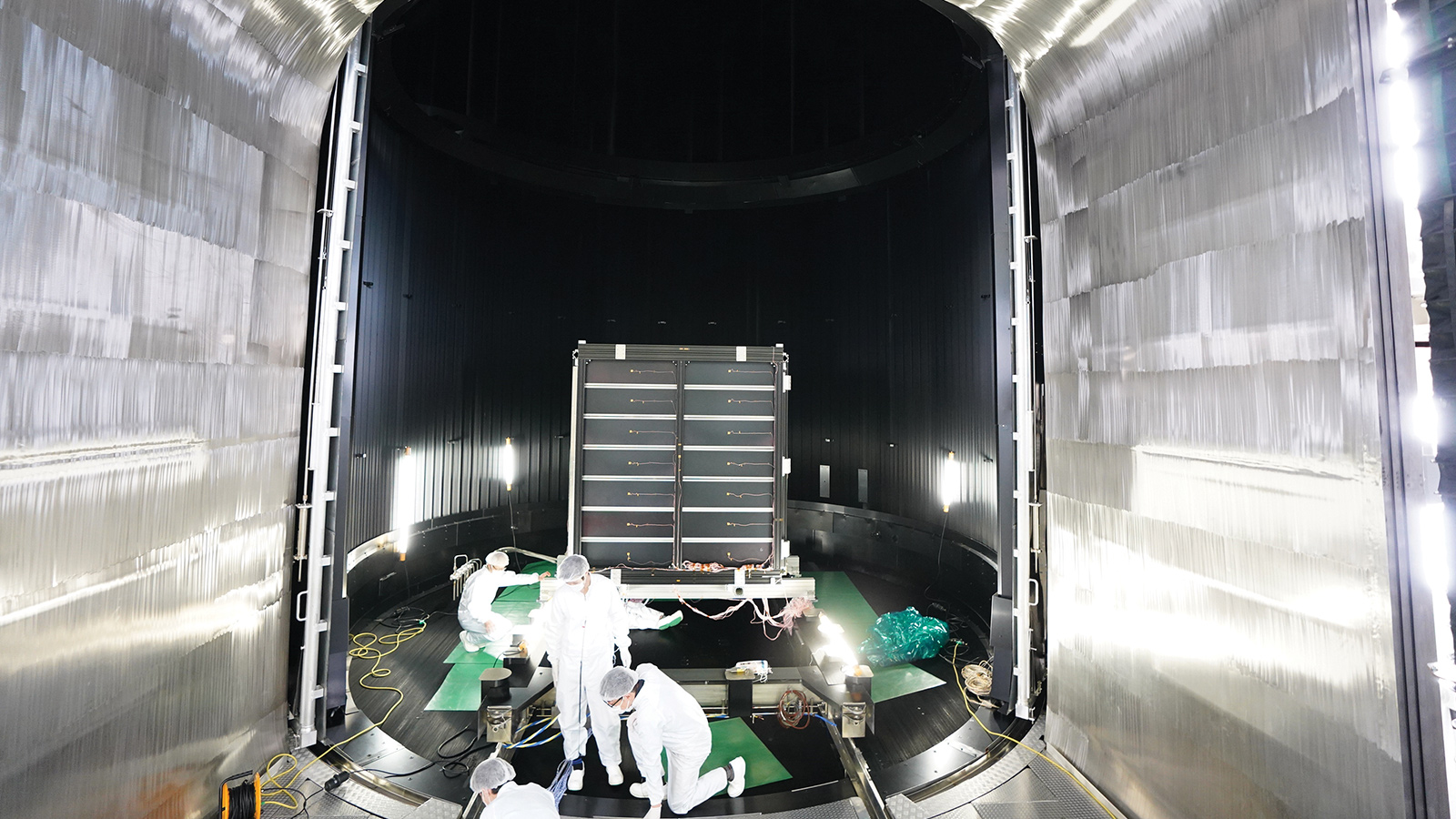Stay Up to Date
Submit your email address to receive the latest industry and Aerospace America news.
The large constellation builders are starting to launch their satellites now, despite a lack of consensus about how best to clear away worn-out or malfunctioning satellites. Enter Astroscale, a startup headquartered in Tokyo with offices in the United Kingdom, the United States and Singapore. The company is about to conduct an orbital demonstration of a magnetic cleanup technique. Astroscale’s Jason Forshaw explains how the mission will work.
Current and future generations deserve an orbital environment that is free of dangerous debris. Achieving this sustainability will require a host of innovations on a global scale, including a reliable method for safely disposing of satellites that have reached the end of their lives. Sweeping space free of ghost spacecraft will open orbital slots for newcomers and reduce odds of collisions and debris that could, in the worst case, render much of low-Earth orbit useless for satellite operators and potentially disrupt services that people use in their everyday lives on Earth.
Estimates are that between 5% and 10% of satellites will end up failing in some manner.
Satellites that naturally reach the end of their lives — run out of power or fuel or have failed electrical or mechanical parts — become orbital debris. A particularly daunting challenge will be the many satellites that could be left tumbling in orbit.
Proving the feasibility of removing them from orbit with a magnetic capture system will be the challenge for our upcoming ELSA-d mission, short for End-of-Life Service by Astroscale-demonstration. ELSA-d’s demonstration will be critical to the future of the space business, given that operators including OneWeb of London and SpaceX of California have begun launching large constellations for provision of internet services, putting potentially thousands of satellites into low-Earth orbit for communications. Vast constellations for Earth imaging and perhaps weather forecasting are likely to follow.
If the series of orbital maneuvers planned for ELSA-d go as well as we expect, future operators of large constellations could hire Astroscale to responsibly dispose of satellites by dragging them to lower altitudes and releasing them to burn up. In addition, Astroscale is talking to governments worldwide about removing old satellites and rocket bodies from space — this is known as “active debris removal” or ADR.
At our corporate headquarters in Tokyo, we are in the midst of testing the key elements of ELSA-d, our washing-machine-size servicer satellite and a smaller companion satellite called the client. These will be locked together during launch, and then separated in space to begin a series of ADR experiments. The satellites will be controlled from the National In-orbiting Servicing Centre, at the United Kingdom’s Satellite Applications Catapult. Astroscale co-produced this servicing center with a specific focus on operating future ADR services. This center is in the Harwell space cluster outside London, near Astroscale’s U.K. offices.
The most ambitious test for ELSA-d will be our attempt to stabilize the client after it has been commanded to tumble, as though it were an out-of-control satellite.
A fully uncontrolled tumbling satellite has never been captured and stabilized before. The feat would mark a breakthrough for me and my colleagues at Astroscale, but even more importantly, for the space industry overall.
The challenge of docking with a tumbling satellite drove some difficult technical choices in the design of ELSA-d. As far as the capture mechanism goes, the technical literature shows a host of ideas ranging from nets to harpoons and robotic arms. We are unique in choosing to tap the power of magnetism. One of the core reasons we chose this solution is that tethered systems (such as nets and harpoons) are riskier in nature. With the magnetic capture system, docking and undocking can be repeated at a relatively slow and safe pace. A net or harpoon gets fired out, or deployed, at a very fast speed, and normally offers only one chance at capturing the client.
The servicer satellite is equipped with this magnetic capturing mechanism, which can extend and retract. The client has a docking plate or DP which is a ferromagnetic plate designed to be captured by the magnetic mechanism.
Astroscale makes these plates as do other manufacturers. Affixed to satellites during manufacturing, the plates are designed to accommodate a range of capture mechanisms, because the industry has not yet reached a consensus about the best method for disposing of satellites. Harpoons, in theory, could be fired into the plates, for instance, or robotic arms could grapple their raised fixtures. We are taking advantage of the simple concept of magnetism, where the magnet is attracted to the metal on the DP.
Recently large constellation operators have started to take interest in the DP concept. OneWeb, which has just begun launching its initial constellation of 648 satellites, confirms that each new satellite will have a grappling fixture that for our purposes will function as a DP.
To begin each part of the ELSA-d mission, the client will separate from the servicer. As part of the capture demonstrations, the servicer will close in on the client and perform a complex series of maneuvers to align and settle with the client. The servicer is equipped with a range of sensors (including radar and lasers) to identify where the client is located. The cube-shaped servicer has eight chemical thrusters, one on each corner. They fire in a coordinated manner to perform the maneuvering. Once the servicer has closed to less than a meter, the servicer’s capture mechanism extends and gently docks with the client.
We’ll undertake this capture demonstration for both nontumbling and tumbling scenarios. These proximity rendezvous operations are incredibly challenging for a tumbling satellite. Algorithms must calculate how to adjust the attitude and motion of the servicer so that it matches the tumbling of the client as it approaches for the docking. The mission design and design of the guidance, navigation and control are complex for this type of mission and over 75 people are now working globally on this mission.
If the safety software on board judges that there is risk of collision, the servicer will abort to a safe distance. In addition, a controller in the operations room can abort a docking at any time.
On ELSA-d, we’ll run the demonstrations during a period of six months to a year. As this mission is complex, we’ll take it slowly and complete one demonstration before starting the next. We’ll ensure that everything is in place for the next demonstration to start before proceeding. In each capture, the mechanism can push away the client to undock from it.
For the ELSA-d mission this year, we’ve chosen to mature these key technologies. Future operational versions of the servicer would carry a dead satellite to a lower altitude and release it to burn up in the atmosphere. The servicer would then steer itself to rendezvous with the next satellite to carry it to disposal orbit. These maneuvers would require the addition of an electric propulsion engine fueled normally by xenon. Such engines have a high specific impulse, meaning they are extremely fuel efficient. The trade-off is that these engines cannot raise or lower the altitude quickly.
Of course, avoiding accidental collisions will be paramount during the ELSA-d mission. Our goal is to mitigate debris, not add to it. In order for a satellite to be launched into orbit, it must receive a government license. The U.K. Space Agency licenses our mission and we have extended significant effort in designing our mission to be safe from an operational perspective — which is required in order to obtain a space license. ELSA-d’s success will be a game changer, as once such rendezvous technologies have matured, new business segments, like in-orbit servicing, will emerge in the market.
Then we will be ready to do our part to create a sustainable orbital environment for future generations.
Jason Forshaw is the European research and development manager at Astroscale UK, an orbital debris removal company founded in 2013 with headquarters in Tokyo. He holds a Master of Science from Stanford University, a doctoral degree from the Surrey Space Centre at the University of Surrey, and is an AIAA senior member.
Related Posts
Stay Up to Date
Submit your email address to receive the latest industry and Aerospace America news.







